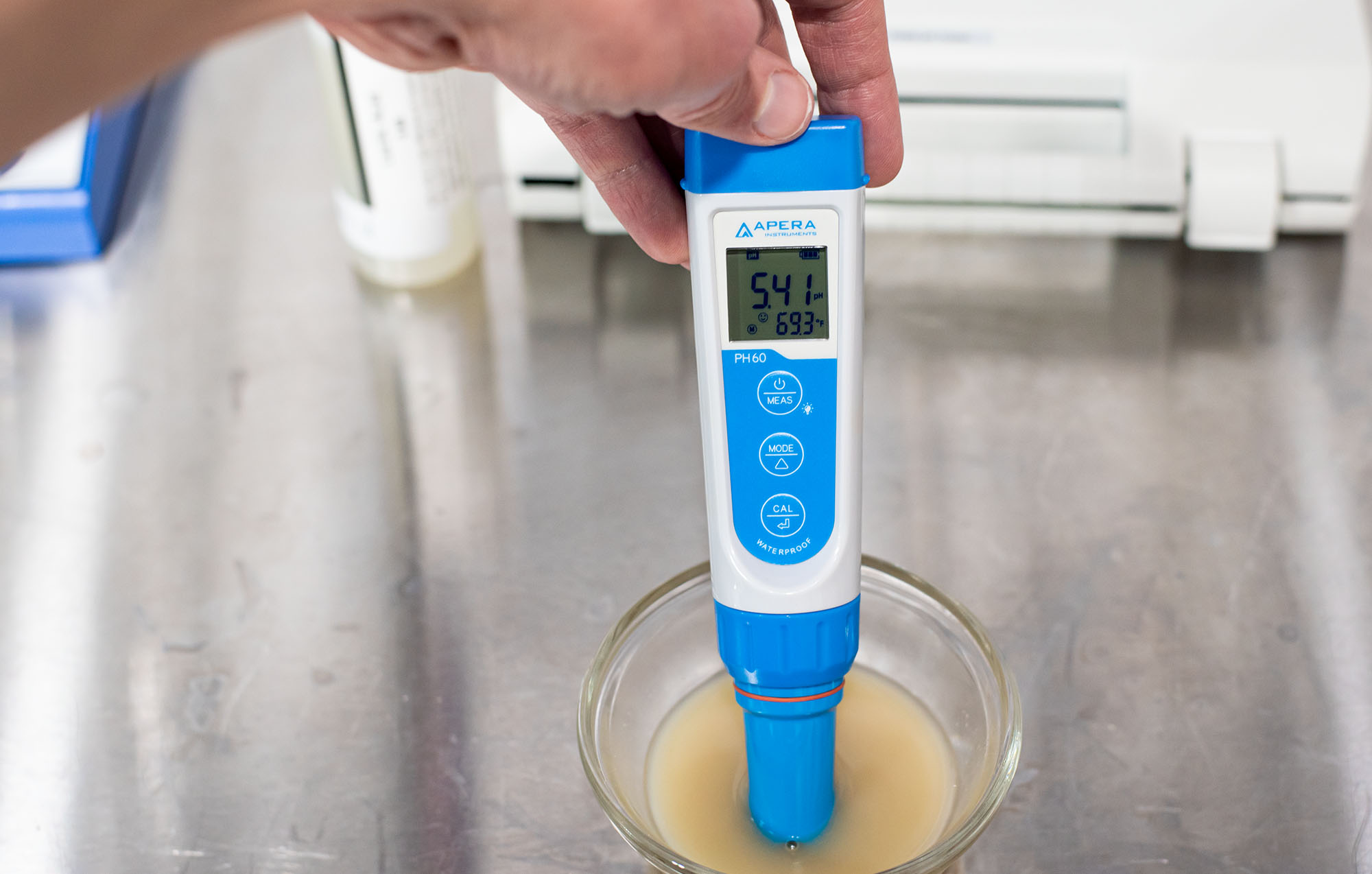How Much Phosphoric Acid To Add To Mash
Mash pH has caused a lot of confusion in the homebrewing world. So much that even some experts have made some questionable remarks on what is right and what is non. I'm writing this because I recently had the same problem. I did a lot of research on brew pH information and got a lot of conflicting answers. Information technology gets even more disruptive when you lot read about how mash pH differs in the actual mash vs the cooled wort sample. It'south enough to make your head spin.
I'1000 actually glad I had this problem because it helped me understand the issue first hand. I was able to sort all of this out with the help of other homebrewers who accept a far more in-depth agreement of this topic than I do. Hopefully this will help anyone who has the same questions as I did.
Ideal Mash pH Range
Before I bound into anything, it's of import to understand that mash pH is measured at room temperature, not the actual hot mash. The optimal mash pH of five.2-five.6 is referring to the room temperature measurement.
This was initially incorrectly published in a BYO article and acquired a slew of backlash. The platonic mash pH target range for a cooled wort sample has historically been v.2-5.6. So when a mash pH figure is given for a specific style of beer, let's say 5.4, that number is referring to the cooled wort sample, and not the actual hot mash temp, which could actually be a lower number. The truthful difference in variance is debated, but as far as I'm concerned it only adds confusion and isn't really needed.
Why Mash pH Matters?
Mashing in the ideal pH range helps to promote better conversion, a cleaner terminate, and a more balanced overall beer. If you make no pH adjustments, your pH is likely to be higher than the recommended range of 5.two-v.6. pH is commonly adjusted (decreased) with either lactic acrid or phosphoric acid.
Predicting Acrid Adjustments
The difficulty with making whatsoever acid adjustments in the mash is the actual timing of it. Mash pH cannot be accurately measured until 10-15 minutes into the mash. If you wait until this point to make any initial acid adjustments, it could actually be too late, as the conversion process is already underway. To get around this, we need to employ brewing software to predict what our mash pH will be, then we tin actually brand acid additions before we dough in.
How and When to Measure Brew pH—My Procedure

I estimate my mash pH using BeerSmith (others user Bru'n Water). These programs accept into account the recipe'southward grain beak and water profile (water and salts) to estimate mash pH. If you lot already utilize BeerSmith or want to effort it out, here is a video of Brad Smith giving a tutorial on how to summate brew pH adjustments with BeerSmith. It's honestly actually simple in one case you get the hang of it.
- I follow Brad'southward recommendation to add together lxxx% of my suggested lactic acid addition directly to my heated strike water before I dough in.
- I dough in, add my brewing salts, stir the mash thoroughly, and set up a timer for 60 minutes.
- In one case 10-15 minutes accept passed (and no sooner), I pull a sample of my wort and cool it to around 70°F. I apply my Apera Instruments digital pH meter to have a reading and tape information technology. If it's within the adequate target range I want, I continue to mash for the remaining duration. You tin can make further adjustments if needed past adding more than or the remaining xx% lactic acrid.
The reason for adding only 80% of acid upfront is to reduce the take a chance of overshooting your target. Raising mash pH is some other story I don't have enough feel with to honestly provide communication. Brewing software isn't perfect and should serve as a rough estimate, so it'southward better to err on the side of caution. If you've brewed the same recipe several times, and accept a better understanding of how much acid is really needed, you can of class add all at in one case.
To hit this home one more time, pH figures in BeerSmith are based off cooled wort samples!
A Give-and-take of Caution on 5.2 Brew Stabilizer
I'm sure many of y'all have heard of the 5.ii Mash Stabilizer production. I have never used it merely I've of form heard rumors that it does not work. To be completely honest I have no idea how it perchance could piece of work. There are so many factors that go into mash pH that I cannot possibly imagine a i size fits all solution to get mash pH to 5.2 every time. Starting h2o profiles and unlike grains all accept dissimilar impacts on your mash pH. You're much better off doing information technology the right fashion as it's really easy once you understand the process. Don't waste your money!
References and In-Depth Articles
Below is more content on brew pH from people who really understand what they're talking about at a technical level. If you would similar to dive into more than in-depth cognition and advice I would read these articles below.
AJ Delange: http://www.homebrewtalk.com/Showthread.PHP?t=302256
Matt Brungard: https://sites.Google.com/site/Brunwater/water-knowledge
KAI Troester: http://Braukaiser.com/wiki/index.PHP?title=Ph_meter_buying_guide
Source: https://hazyandhoppy.com/how-to-properly-measure-and-adjust-mash-ph/

0 Response to "How Much Phosphoric Acid To Add To Mash"
Post a Comment